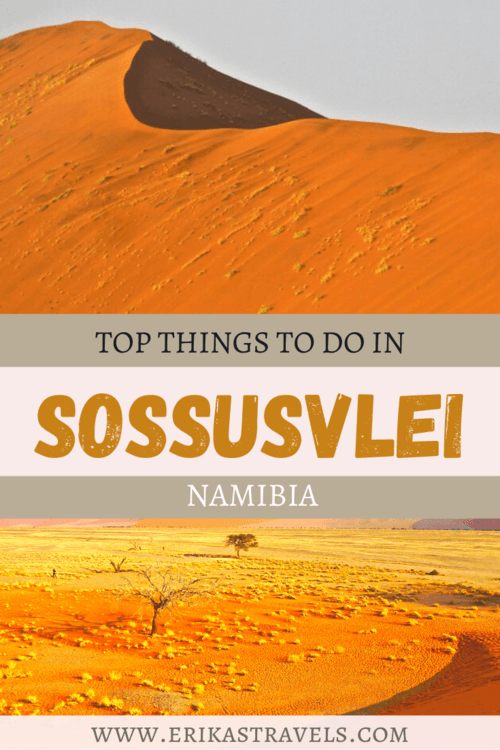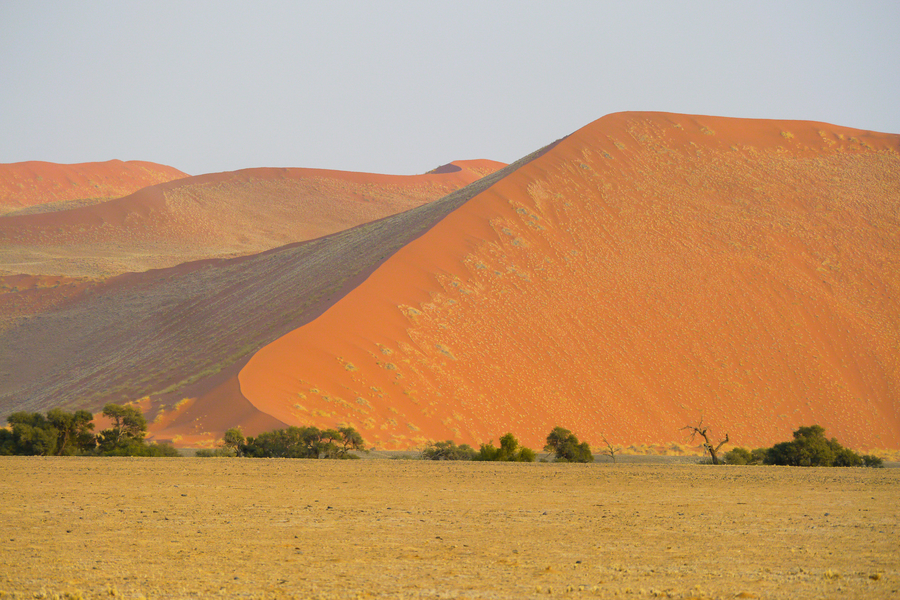
Visiting the Sossusvlei Sand Dunes in Namibia
Sossusvlei is a place where the vastness of Namibia’s desert is both overwhelming and achingly beautiful. It is a hyperbole of nature. One of my favorite places in the world.
In writing this guide to Sossusvlei, I wanted to convey the sensation of standing amid waves of rust-colored sand. I wanted to memorialize my experience and imprint it in my memory.
But—despite having put my thoughts and images to paper—I failed to find the perfect words or snap the perfect photo.
I can’t possibly do justice to the Namib Desert’s epic scenery. It’s just a place that you’ll have to see with your own eyes.
THE NAMIB-NAUKLUFT NATIONAL PARK
The Namib-Naukluft Park in Namibia is home to the world’s oldest desert. The park encompasses nearly 50,000 square kilometers of vast nothingness. Amongst this nothingness, lies some of the most beautiful scenery in Africa.
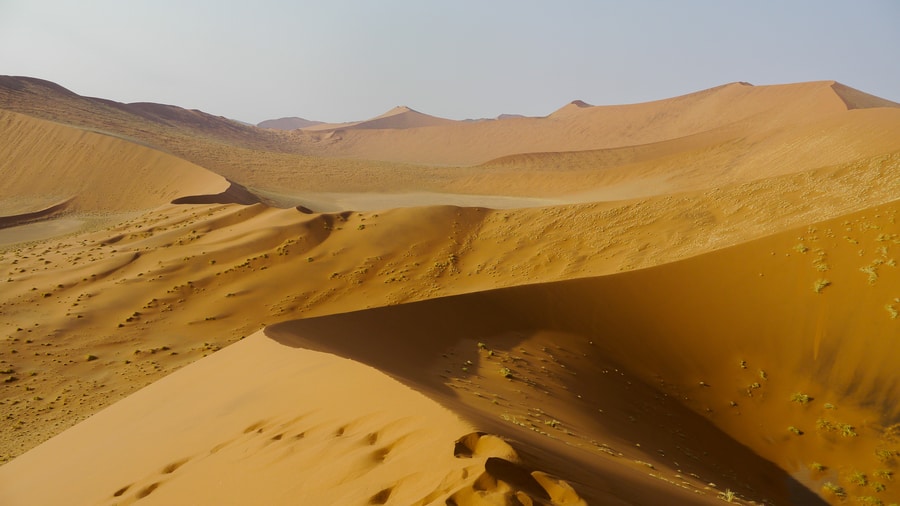
As journalist Elinor Burkett describes, “those naive enough to believe that a dune is a dune is a dune are faced with a dizzying array of sand configurations.” These sand configurations have been chiseled over the course of centuries by the Kalahari and Atlantic winds. They have been beautifully sculpted by the elements and stand as a testament to nature’s sometimes raw and unforgiving power.
The Namib-Naukluft Park features orange dunes and purple mountains. Its vast sand sea probably originated in the Kalahari, between three and five million years ago. The older the dunes, the more intense their reddish hue.
At the heart of the park lies Sossusvlei—a photogenic clay pan surrounded by some of the tallest sand dunes in the world.
THINGS TO DO IN THE NAMIB-NAUKLUFT NATIONAL PARK
The Namib-Naukluft Park is, without a doubt, one of Namibia’s premier tourist destinations. It vies with Etosha National Park for the top spot on Namibia’s must-see list.
The vast sand sea is a wonderland for lovers of solitude and otherworldly scenery. Though it is the mainstay of many Namibia itineraries, visiting Sossusvlei can make you feel like you are the only person in the world. Its dunes are sweeping and immense.
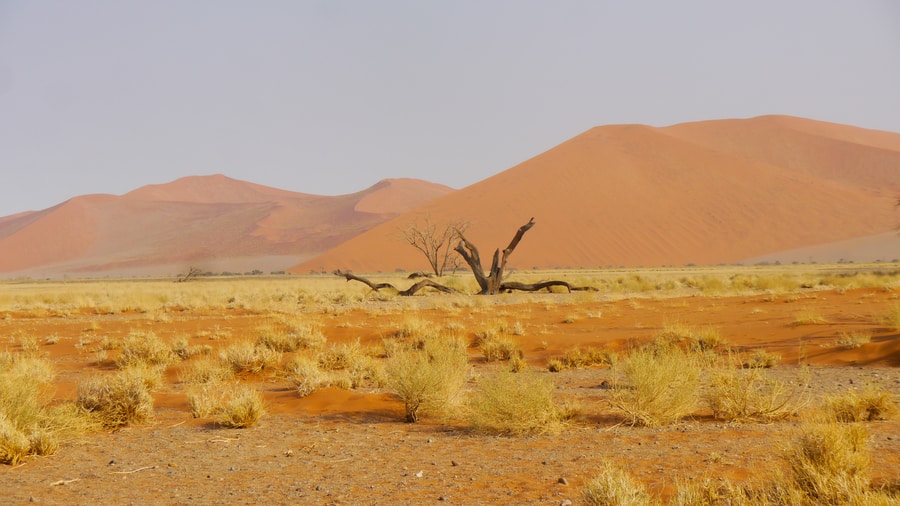
It is truly one of the world’s most spectacular desert landscapes.
-
CATCH THE SUNRISE AT SOSSUSVLEI
For many, watching the sunrise above the blood-red dunes of Sossusvlei is a Namibia travel highlight. And, had I reserved a campsite within the boundaries of the national park, I would have certainly taken the opportunity to witness the morning sun paint the desert dunes.
Unfortunately, the main gates at Sossusvlei open at 6:00am September-April and 6:45am October-May—making sunrise-viewing challenging for those unable to secure accommodation within the park.
-
LOOK OUT FOR FAIRY CIRCLES
The rippling yellow grasses in Sossusvlei conceal a host of wildlife.
But as you keep your eyes peeled for ostriches and antelope, be sure not to miss the mysterious fairy circles—rings of barren land that have baffled scientists due to their unexplained origins.
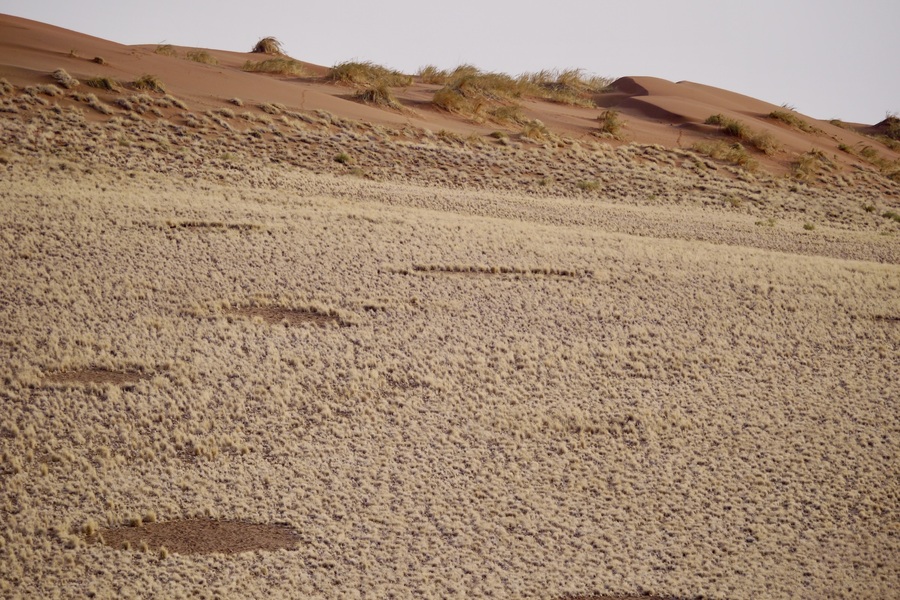
Namibia’s fairy circles maintain almost perfect circular form, as if someone methodically took a cookie cutter to the ground. The polka-dotted patches of bare earth are pretty unique to the area.
-
HIKE DUNE 45
Dune 45 is one of the most photographed dunes in the world. It offers stunning views of the parched earth from its summit. Though not the tallest dune in Sossusvlei, many tourists opt to climb it due to its proximity to the road, its relatively gentle grade and its beautiful vistas.
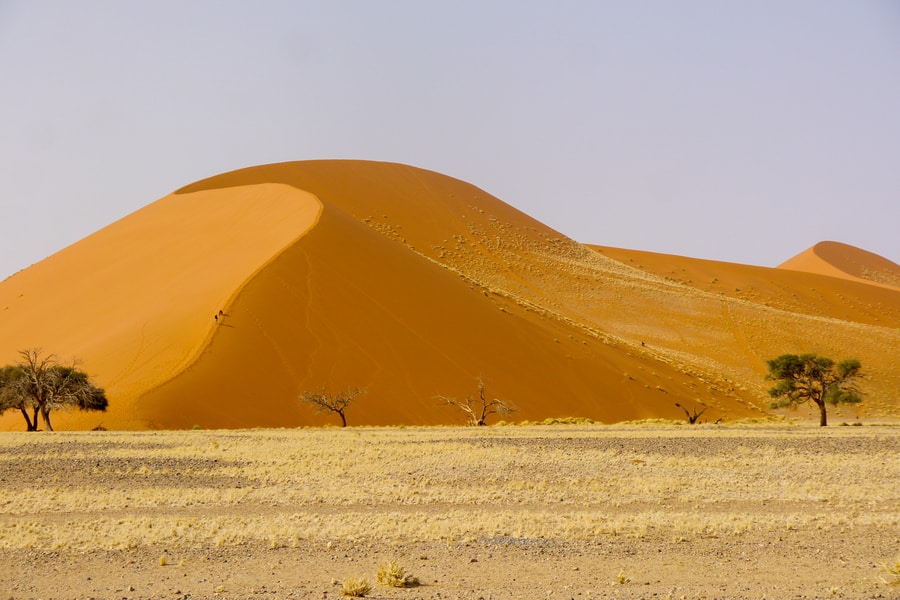
I sat at the top of Dune 45 for a while, looking out over the sinuous ridges of the surrounding sand sea.
I still remember the sensation of awe that flooded every bone in my body when I gazed out at Sossusvlei from atop Dune 45.
-
PHOTOGRAPH THE DEADVLEI PAN
Deadvlei, a large pan of cracked dry clay, lies cradled between some of the world’s tallest dunes. It was formed when the Tchauseb river temporarily flooded and created an environment where Namibia’s desert-adapted Camelthorn Trees could thrive. Shifting sand and dry temperatures, however, cut the pan from the course of the river.
As a result, the area has long since dried up.
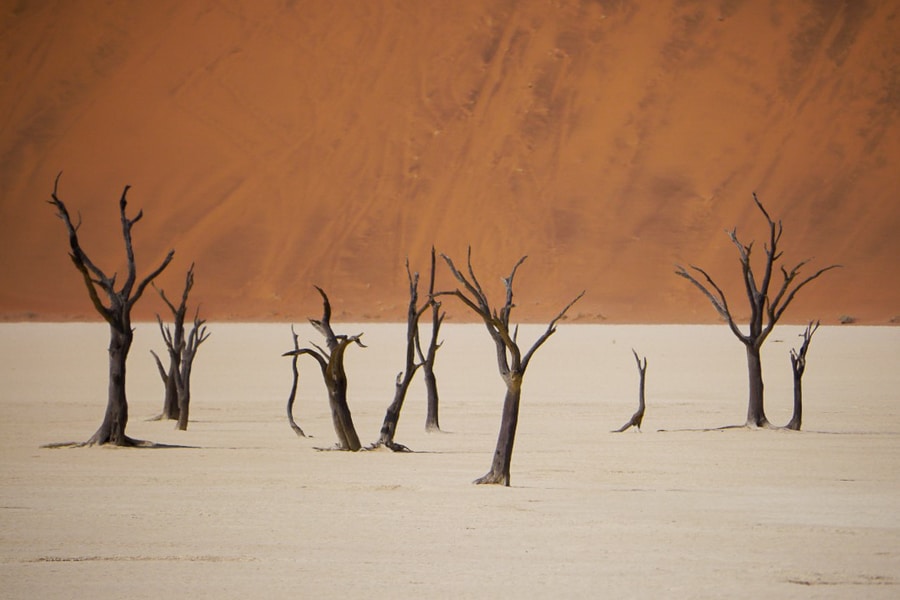
Over the course of approximately 900 years, the unrelenting sun charred the tree bark and painted it a deep black.
Today, Deadvlei’s trapped acacia treesare a photographer’s dream and a symbol of Namibia. The area’s black trees, white clay, red earth and deep blue sky combine to create a dazzling and otherworldly sight.
-
HIKE THE BIG DADDY SAND DUNE
Big Daddy, the world’s tallest dune, lies just behind Deadvlei. Soaring 325 meters above the surrounding landscape, it it is one of Namibia’s most popular hiking destinations.
I began hiking Big Daddy sometime around midday, but the scorching afternoon sun forced me to turn back before I reached the summit.
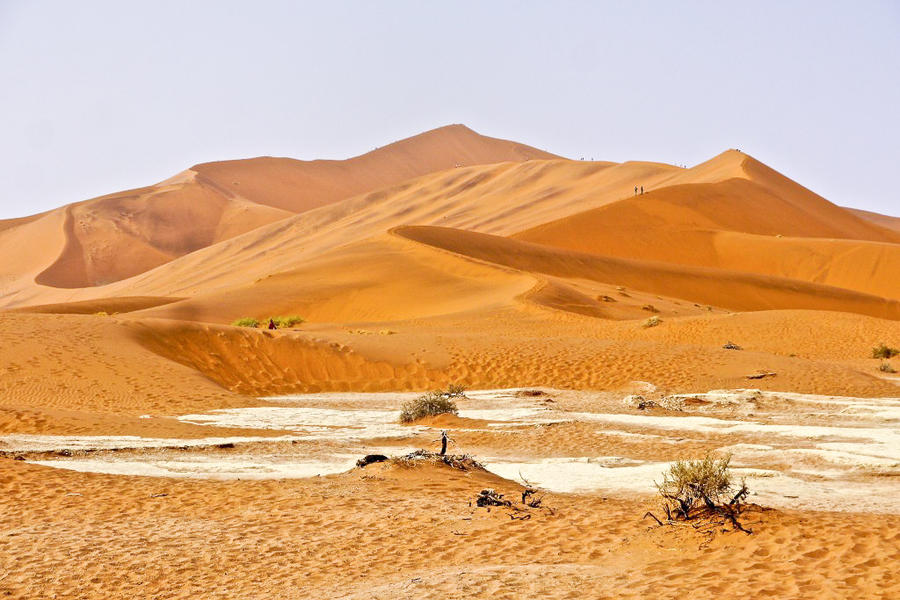
Nonetheless, by making it halfway up the dune, I was able to witness aerial views of the skeleton trees that litter Deadvlei’s clay pan.
-
WALK THROUGH THE SESRIEM CANYON
The Sesriem Canyon is one of the top attractions in the Namib-Naukluft National Park. A narrow gorge carved millions of years ago by the mighty Tsauchab River, its towering sandstone walls provide respite from the burning sun.
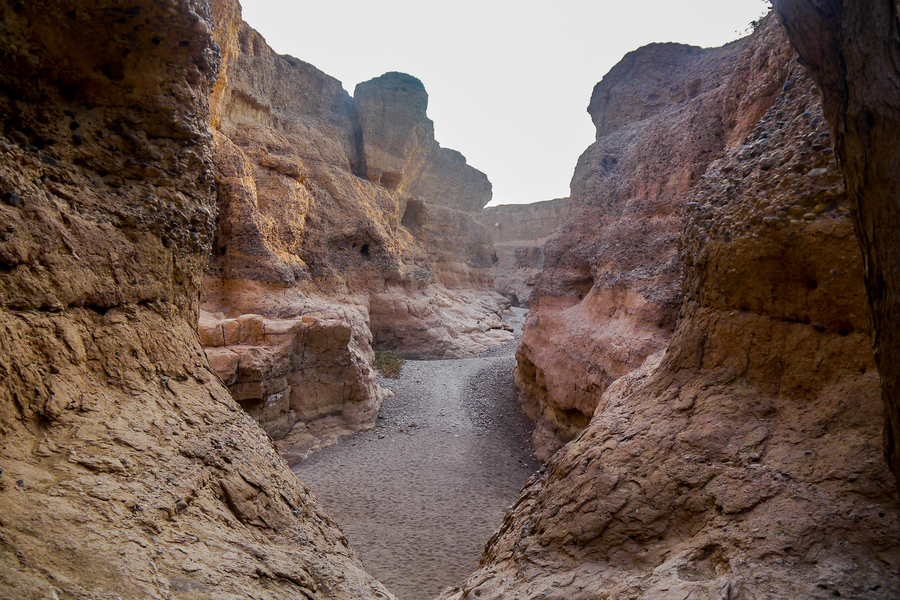
We spent about an hour meandering through the walls of the narrow gorge.
Though the Sesriem Canyon does not boast the grandeur of Sossusvlei or the country’s awe-inspiring Fish River Canyon, it is nonetheless worthy of a visit.
-
CHECK OUT HIDDENVLEI
Hiddenvlei is one of the more accessible places to visit within the Namib-Naukluft National Park.
Yet despite its proximity to the Sesriem Gate, it remains mostly off the beaten path.
We didn’t prioritize Hiddenvlei during our trip to Namibia’s sand dunes and omitted the area from our itinerary.
The hike to Hiddenvlei takes around 1.5 hours in total.
-
WATCH SUNSET AT THE ELIM DUNE
We ended our day in Sossusvlei with a pit-stop at the Elim dune around sunset. Unlike the other highlights of the Namib-Naukluft Park, Elim is not known for its immensity or grandeur.
Rather, tourists visit it for the beautiful display of pastel colors.
Tufts of green grass spring from the orange sand, in contrast to the yellow grasses and purple mountains. The area reminded me of Coral Pink Sands State Park in Utah.
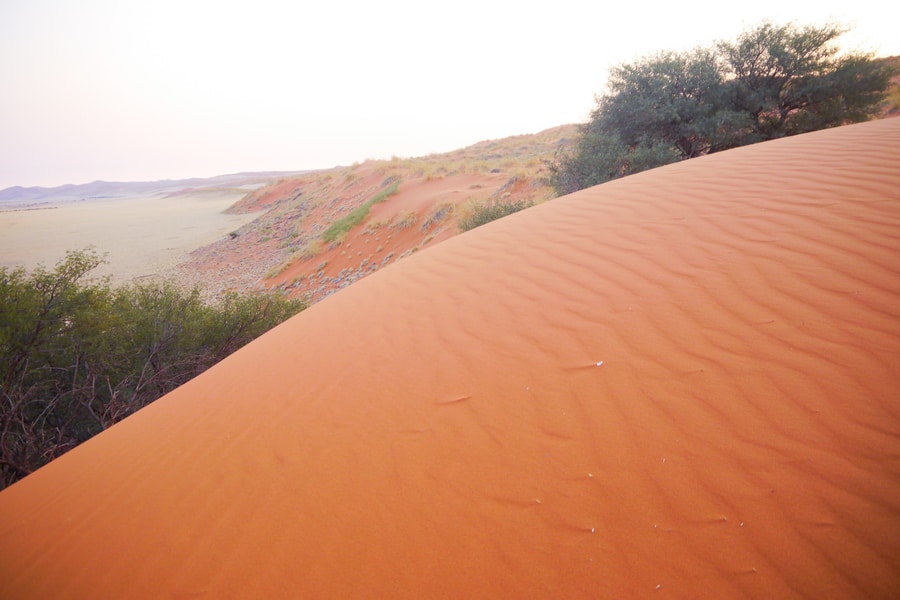
We climbed the Elim dune as golden hour painted our surroundings in stunning light.
I would have loved to stay at the Elim Dune until sundown, but we had to race out of the Park’s gates before the sun dipped below the horizon.
GETTING TO SOSSUSVLEI
Namibia is the second most sparsely populated country on Earth. And sometimes, traveling along its roads can make you feel as though you’re the only person in the world. In order to reach Sossusvlei, we drove for hours without passing cars or signs of civilization.
The gravel road to Sossusvlei took us past golden coastal dunes near Walvis Bay, along endless plains, twisting canyons and pastel landscapes.
We passed the Tropic of Capricorn, stopped for lunch at the tiny outpost of Solitaire, and reached our campsite by nightfall.
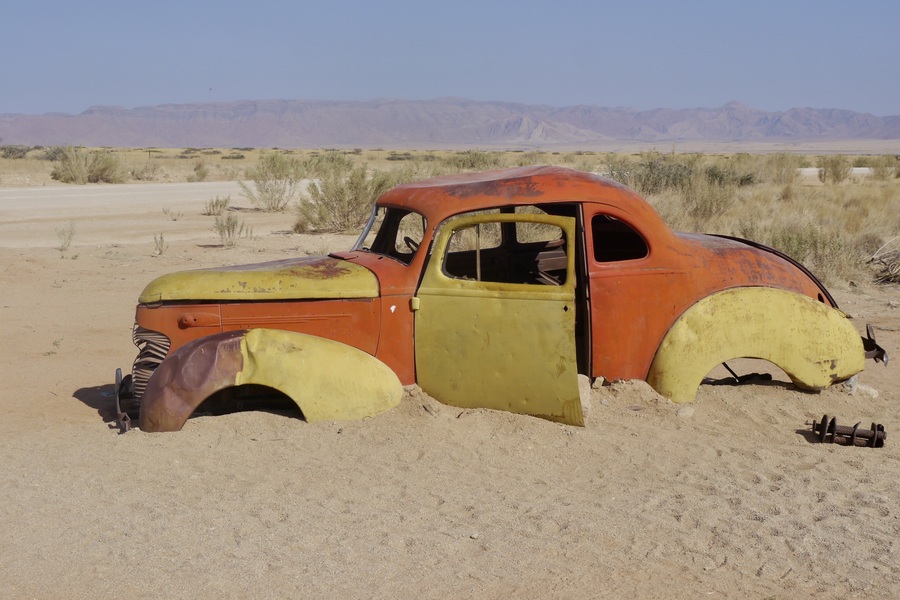
Unless you’re traveling North to Sossusvlei from Cape Town, chances are that you will be traveling to Sossusvlei from Windhoek or Swakopmund along the same route that we took. The soaring dunes of the Namib Desert lie roughly five hours from both cities, though it is a good idea to allot extra time due to road conditions.
If coming from the north, head south on the C14 toward Solitaire. In Solitaire, turn onto the C19. The C19 will take you close to Sesriem and the gates of the national park.
WHERE TO STAY NEAR SOSSUSVLEI
Accommodation in Sossusvlei falls into two main categories: luxurious wilderness lodges, and self-catered tent camping. Both options allow you to feel immersed in the immense beauty of Namibia’s desert. The best option just depends on your budget and travel style.
-
INSIDE THE PARK
Sesriem Camp lies within the gates of the Namib-Naukluft Reserve. Those staying at the cap have the advantage of being able to drive to the dunes for sunrise and sunset. Sossusvlei and Deadvlei are 60 km from the campsite.
There are no lodges or guesthouses within the park’s boundaries.
-
OUTSIDE THE PARK
We stayed at the Sossus Oasis Campsite during our visit to Sossusvlei, since we couldn’t secure a spot within the park’s boundaries. The site offers 12 luxury camping spots just outside the Sesriem gate. We had a great stay at the Sossus Oasis, though we regretted not being able to access the park for sunrise.
Outside the park boundaries, you’ll also find a handful of lodges and guesthouses. The Sossusveli Lodge in Sesriem is a beautiful 4* accommodation near the park’s entrance gates. It boasts an outdoor pool and patio and views of the Namib-Naukluft’s purple mountains. At a slightly lower price point, you’ll find the nearby Desert Camp.
If you want to splurge, the highly-rated Hoodia Desert Camp is among the top places to stay in the area. The camp requires a two night minimum. Room prices include a full-day excursion to Sossusvlei.
SOSSUSVLEI WILDLIFE
Sossusvlei might appear inhospitable, but its ochre sands house a surprising array of animals and plants. The animals of the Namib Desert have adapted to survive in their extreme environment—withstanding temperatures that breach 40 degrees Celsius during the day and then plummet to below freezing at night.
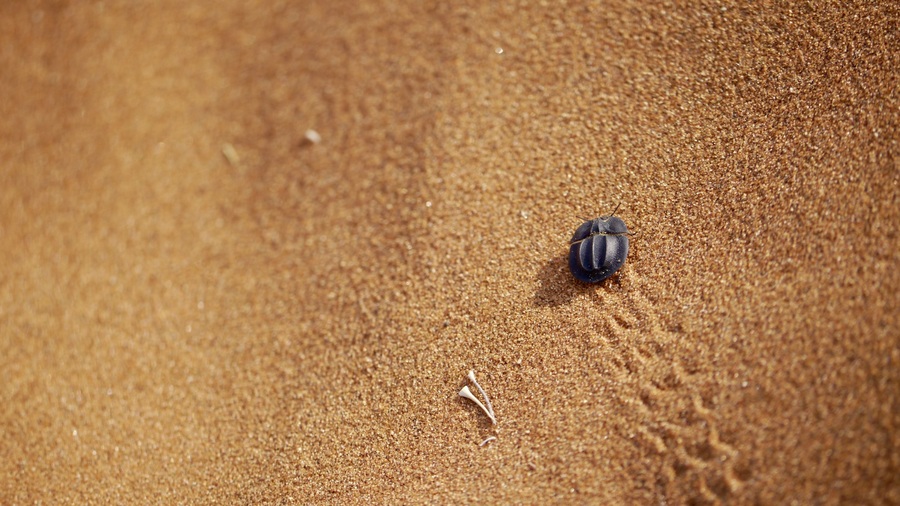
Along the park’s roads, springbok, oryx and ostriches dot the fields of rippling yellow grass. Each of these animals has adapted to live in a dry and largely inhospitable environment.
Beneath the sand live beetles, spiders and reptiles.
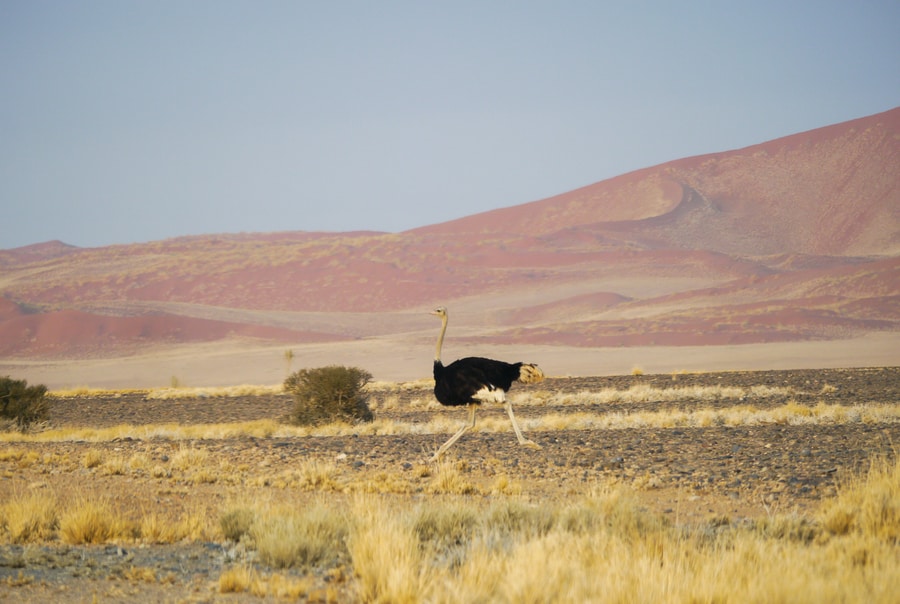
Two small mammals are endemic to the Namib Sand Sea: the golden mole and the dune gerbil.
SOSSUSVLEI HOURS AND PERMITS
The Sossusvlei Dunes are accessible daily, during opening hours. The outer gate (or Sesriem Gate) opens at sunrise and closes at sunset. This is the gate you’ll use if you’re staying in Sesriem or beyond.
The inner gate opens one hour before sunset and closes one hour after sunset. For travelers camping inside of the Sesriem Gate, they provide the opportunity to access the dunes for sunrise and sunset.
Entrance tickets to Sossusvlei ($N80 per person) can be purchased at the inner gate.
BEST TIME TO VISIT SOSSUSVLEI NAMIBIA
Sossusvlei is blessed with around 300 days of sunshine, so you aren’t likely to encounter much rainfall during your visit. However, scorching temperatures mean that the area is best to explore during the dry season, between May and October.
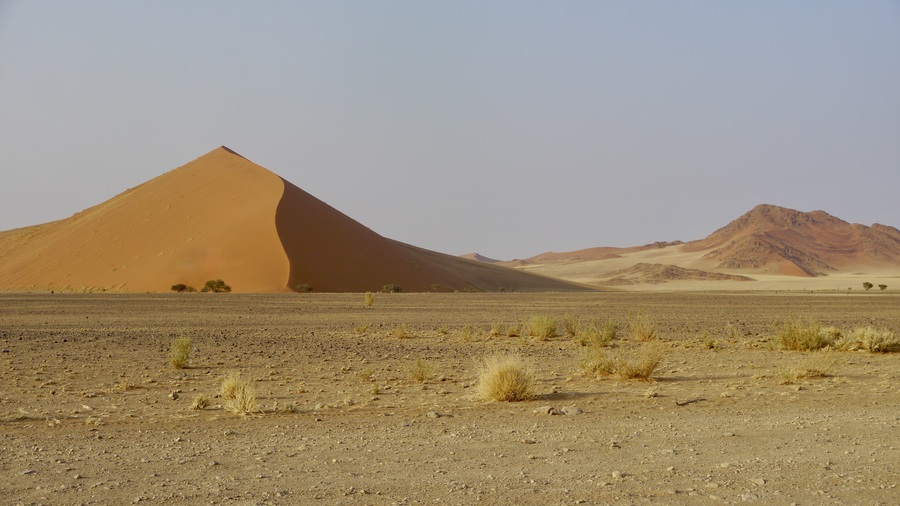
The best time to visit Sossusvlei coincides with prime animal-viewing times for Etosha, Chobe and the Okavango Delta. So, if you’re itinerary includes more than just the Sossusvlei Dunes, the best time of year for seeing wildlife might be something to consider.
****
There are some places that are too beautiful for words or photos. I could post hundreds of pictures of my day in Sossusvlei, but they would not accurately depict the mesmerizing landscapes I saw with my own eyes.
While I apologize that I was not able to do justice to the beauty of the Namib Desert, I hope that I can somehow inspire you to add the natural wonder to your bucket list.
I promise you will not be disappointed.
________________________________
Did You Enjoy this Guide to the Sossusvlei Dunes in Namibia’s Namib-Naukluft National Park? Pin It!
